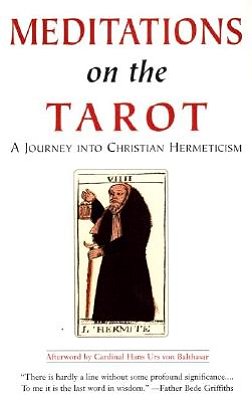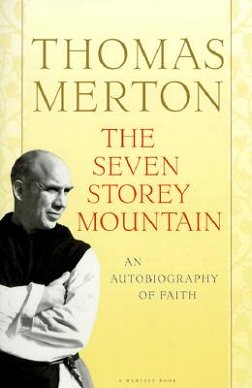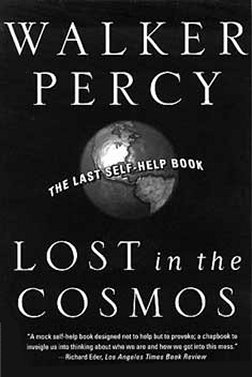Collecting and Selling the "100 Best Spiritual Books of the Century"
by William M. Klimon #90, 12 March 2007 |
The end of the last century saw the enumeration of not a few "best of" book lists,
perhaps most famously the
Modern Library's "100 Best Novels."
But with all the debate about the composition of such lists, I did not see much mention of forming
a collection based on such them. It used to be quite common for collectors (and thus dealers) to
follow lists like the Grolier 100 (i.e., One Hundred Books Famous in English Literature
[1902]) or Merle Johnson's High Spots of American Literature (1929) in assembling their collections. But, as John Carter and Nicolas Barker note, collecting by such lists is "[l]ess prevalent than of yore, if only because the books are harder to come by, but still the resort of collectors with more money than sense."
Still, such lists may be very instructive and may serve as the launching points for interesting
bibliographic explorations - the prime example being the fact that the authoritative 9-volume
Bibliography of American Literature (1955-1991), edited by Jacob Blanck, had its origins
as an update of Johnson's High Spots.
Recognizing their utility, without becoming a slave to such lists, I want to commend one of
the lesser-known lists from the fin de siècle, HarperCollins's
"100 Best Spiritual Books of the Century." Assembled by the redoubtable Philip Zaleski, editor of the annual Best American Spiritual Writing, and his panel of critics, the list includes only works first published in English in the 20th century that exhibit "a combination of spiritual insight and literary excellence." Sadly, HarperCollins
has removed the page from its website, but the
list and its accompanying
press release are available
through the Internet Archive.
The list contains many books that will be familiar to collectors and dealers, including items quite
valuable in their early editions like Henry Adams's Mont-Saint Michel and Chartres
(privately printed 1st ed. 1904) and Alcoholics Anonymous (1st ed. 1939). Later
collectibles on the list include Tolkien's Lord of the Rings trilogy and C.S.
Lewis's Narnia books, not to mention obviously important literary works
like T.S. Eliot's Four Quartets, Jack Kerouac's Dharma Bums,
Hermann Hesse's Siddhartha, and Graham Greene's The Power and the Glory, all of which run in the mid-three or low four figures for nice first editions.
I'd like to draw your attention to a few of the items on this lesser-known list and describe some of my experiences with them:
Valentin Tomberg, Meditations on the Tarot: A Journey into Christian Hermeticism
(First American edition: Amity, New York: Amity House, 1985)
The best way to describe this book is that it is as a fusion of Catholic theology and hermeticism -
which makes sense because Tomberg (1900-1973), a Russian-born legal scholar, was a convert from
Anthroposophy to Catholicism. The book was originally written in French; first published in
German translation as Die grossen Arcana des Tarot: Meditationen (1972); then published
in French as Méditations sur les 22 arcanes majeurs du Tarot (1980); and
finally in English translation in 1985. Tomberg left instructions that it was only to be published after his death and then still anonymously. (He had in life ruffled a number of feathers in Theosophical and Anthroposophical circles by reason of his conversion.) The German and French editions, as well as the most recent English edition, carry a preface by Hans Urs von Balthasar (1905-1988), who is increasingly considered to be the greatest Catholic theologian of the twentieth century. He was scheduled to have been made a cardinal by Pope John Paul II two days after he died. Von Balthasar's praise of the book has stirred quite a bit of interest since.
The English edition was later republished in paperback by Element Books, a New Age imprint, in 1991, and, in a revised edition, by Penguin's Tarcher/Putnam imprint in 2002, which is still in print and, so, widely available. But the original 1985 edition from Amity House has become and remains a very collectible and hard-to-find book. Amity House, which seems no longer to exist, produced a big, handsome book - 650+ pages in gold-stamped navy cloth with an imposing dust jacket featuring a detail photograph of the "Christ of the Apocalypse" from Chartres Cathedral - in an edition that must have been very small, perhaps 1,000 copies or fewer. The original cover price in 1985 was $44.95, but it was the kind of book that seemed worth the money.
I discovered this book right after its publication at my favorite "New Age" bookstore, Garland of Letters on South Street in Philadelphia. I bought a copy - quite an investment in those days - but for some reason that copy left my collection and I have been hunting for it ever since. A couple of years ago, I found a flawed copy for $17.50 in the "Games" section (presumably because of the tarot-card connection) of a Washington, D.C. area used shop. The jacket was cigarette-smoke stained (since cleaned and Brodarted) and the book has some ink underlining in the first chapter, but since copies, even flawed (I once saw one listed as "lacking its copyright page"!), typically fetch $250 to $500, it holds the place on my shelf till a better copy comes along.
Thomas Merton, The Seven Storey Mountain (First edition: New York: Harcourt, Brace and
Company, 1948)
It is no surprise to find The Seven Storey Mountain, the memoir of Thomas Merton
(1915-1968), a worldly Cambridge and Columbia college student who enters a Trappist monastery
in Kentucky on the eve of World War II, on a list of the last century's important spiritual
works. From the beginning it has been recognized as "among the classic records of spiritual
experience," in the words of Evelyn Waugh, who blurbed the American edition and wrote the
foreword to the British edition (1949, published as
Elected Silence: The Autobiography of Thomas Merton). It also drew the early praise of Graham Greene, Clare Boothe Luce, Clifton Fadiman, and Bishop Fulton J. Sheen and was a great bestseller within a few months of publication.
The book has never been out of print and there is no shortage of copies available for sale. But
true first editions are much harder to come by. There is some debate about exactly how many copies
of the first printing of the first edition were printed: Frank Dell'Isola,
Merton's bibliographer, says there were 6,000 copies of the first printing of the
first edition. Robert Giroux, Merton's friend and publisher, who worked at Harcourt,
Brace at the time and was later a partner at Farrar Straus, says the initial run was 5,000
but that 7,000 more (presumably later printings) were printed before the end of 1948.
Whatever the exact number of first editions, The Seven Storey Mountain (SSM)
is an important book in my primary collection, so I have become quite familiar with its
first-edition points.
The key fact about the true first edition of SSM is that each copy is clearly denominated
as "first edition" on the copyright page; the later printings from 1948 have no printing
indication; printings from later years are so indicated. The second most important point is that
the dust jacket has a price of "$3.00" on the top of the front flap; the price was quickly
raised to $3.95 and then $4.95. Seems simple enough, but there are some bibliographic complications
that have made collecting SSM a bit more challenging:
The first-edition binding appears in two different states: white (or off-white) cloth with black lettering and black cloth with gold lettering. Because many fewer white copies have been found and because all subsequent printings were bound in black cloth, the white copies are thought to be the "first state" binding and thus somewhat more valuable. Unfortunately, finding a white copy does not guarantee a true first edition (see the caution in #3 below).
The first-edition dust jacket also appears in two different states: the presumed
first state, which captions the middle photo on the rear of the jacket as "(Author
second from the left)," and the second state, which changes that caption to
"(Author on the left)." Later printings of the jacket, in addition to the higher pricing noted above, also have a mention of Merton's Catholic Press Association award on the bottom of the rear flap.
So many sellers, particularly on eBay, but even long-established professionals, get so
caught up in the nuances of these different states that they forget to look for the
"first edition" notice. In Portland, Oregon, in Powell's rare book room,
I once found a copy of SSM, with elaborate notations about the second-state binding
and the second-state dust jacket, priced at $225. What the cataloguer failed to notice, however, was that there was no statement of "first edition" on the copyright page - and that that copy was a later printing from 1948, and thus a $10 book. I brought this fact to their attention, but for some reason they didn't seem to appreciate my assistance.
There is a final caution about putative first editions of SSM:
There was a Taiwanese pirate edition of SSM in the 1960s that looks much like the first edition (including the "first edition" statement on the copyright page) in the first-state, off-white binding. The clue there is that there is no price on the jacket and that such copies, both the books and the jackets, just look so shiny and perfect that, with a little experience, you can easily see that they are not first editions from the late 1940s.
I've owned dozens of copies of SSM, but my favorite copy is a first edition in the white-cloth state.
py lacked the dust jacket, and so was purchased for a song, but I was able to supply a first-edition,
second-state jacket with little trouble. Its key feature is the ownership signature of
Mildred Walker Schemm
(1905-1998), a late, Montana novelist of some little renown, who in
turn might prove a fruitful collecting target for anyone so inclined.
Harcourt, Brace was also Walker Schemm's publisher throughout the 1940s, so I assume that she received the copy from the publisher or perhaps as a review copy. It is a nice little association, not to mention a partial validation of the copy's authenticity as against the pirate edition.
Walker Percy, Lost in the Cosmos: The Last Self-Help Book (First edition: New York,
Farrar Straus Giroux, 1983)
Walker Percy's major nonfiction book is a hilarious parody of the 1980s' self-help books,
pop science like Carl Sagan's Cosmos, and TV chat shows (his target then was Phil
Donohue; today, of course, it would have been Oprah Winfrey), but also a serious exploration
of Percy's interests in semiotics and Christian existentialism (there is a small but serious
group of scholars who acclaim Percy [1916-1990] as one of the most important American philosophers
of the latter half of the twentieth century). By 1983, Percy was a major literary personage and his
books - too few novels for a 30-year career - were major events. In other words, many, many
copies (35,000 in fact) of the first edition of Lost in the Cosmos were printed. So it's
not a rare book, and thus I was not troubled some time last year when looking at my shelf I saw
my books by Walker Percy and realized that I no longer had a copy of Lost in the Cosmos. I read it when it was published and enjoyed it, so I thought to myself that I should get another copy of it - not a difficult task.
Within a week of that thought, I was doing a little scouting at a local thrift, and, as I passed
the second bookcase in the back of the store, I saw a copy of Lost in the Cosmos jammed in at the bottom. Ah-ha, I thought, I can make that (re)acquisition right now. The book was a little worse for the wear, but when I opened it up I had the nice surprise to see that it was a first, signed by Percy above his name on the title page, a helpful reminder both that the apparent condition of a book should not be the last word on its value and that a very common $1 book may often hold a $100+ surprise inside.
Copyright 2003-2011 by BookThink LLC



Contact the editor, Craig Stark
editor@bookthink.com